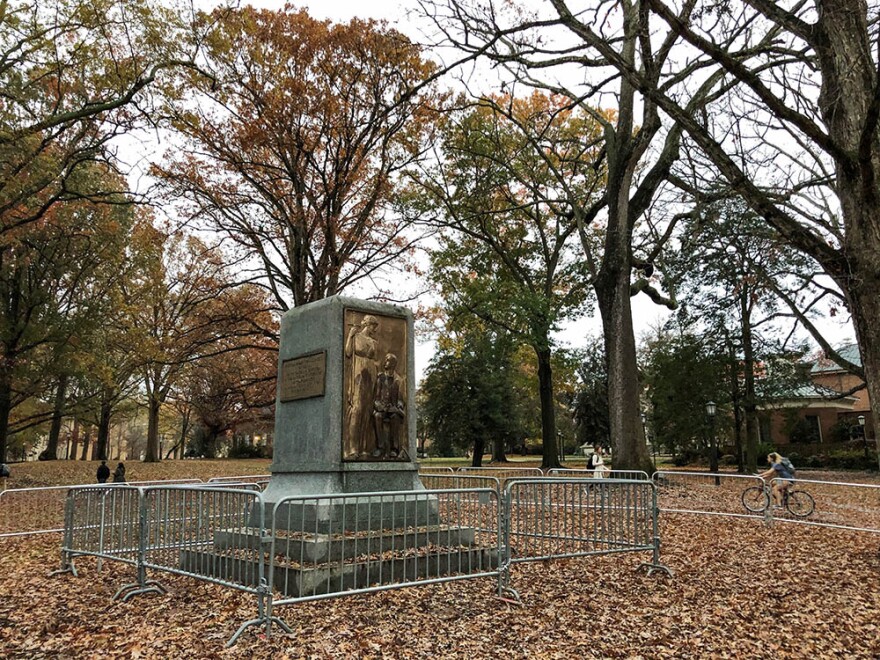Members of the UNC Chapel Hill faculty are trying to secure a say in new deliberations about Silent Sam, the Confederate monument protesters tore down from the campus last August. But it’s unclear whether or not, and to what extent, they will be given one.On Friday afternoon, the UNC Faculty Council created a committee that, according to a resolution, “shall be included” by university administrators “in all planning for the disposition of the statue.”
“But whether and how that gets honored is largely out of our control,” says Eric Muller, a member of the Faculty Council who has taught law at UNC for two decades.
Muller says he hopes university administrators will honor the request.
“And I have every reason to believe the chancellor and provost respect the perspectives of the faculty and would welcome faculty input of that kind,” Muller says. “Whether the Board of Trustees and the Board of Governors in particular share that--that’s above my pay grade.”
Last fall, UNC Chapel Hill trustees developed a hugely unpopular proposal for the Confederate Statue, entirely behind closed doors. Then, the system’s Board of Governors voted to reject that proposal after meeting for hours, also entirely behind closed doors. In both cases, exceptions to state open meetings law were cited as the reasons for going into closed session. But, as Muller says, there’s no way at this point to determine if those exceptions were justified.
“That’s part of the reason that I think faculty believes we need a seat at the table,” he says. “So that we can know, first of all, the extent to which the campus’s perspectives are being woven into the discussions, and also, just to know what the discussions are.”
A spokeswoman declined WUNC’s request for an interview with UNC Chancellor Carol Folt. But in a statement last month, Folt said administrators would “work closely” with the Faculty Council, and the new faculty committee, in developing a new proposal for Silent Sam.
Cary Levine, an art history professor and member of the Faculty Council, is hopeful this will be the case, despite reason for skepticism. Last fall campus officials solicited faculty input on the statue and its future. But it’s not clear this input was considered, especially because deliberations happened behind closed doors.
“This can’t all be done in the back room and then rolled out,” Levine says. “And then you can’t act surprised when everyone goes bananas, or says, ‘This is not representative’...You look like you haven’t even considered those kinds of perspectives.”
Levine says, by including faculty in decisions about the statue, administrators would have ambassadors “who were in the room, who can then go out and convince their colleagues and speak to people and say, ‘Hey, it’s complicated, this is really the best thing we could’ve hoped for and in fact, it’s going to help us for these reasons.’”
Campus officials have yet to say how the new faculty committee might be involved in decision-making about the Confederate statue’s future, and they aren’t the only ones steering the process. The Board of Governors has selected five of its members to take part. They’re tasked with bringing a new plan for Silent Sam to the full board by March 15.









